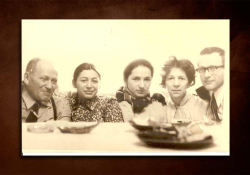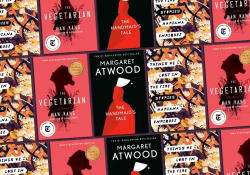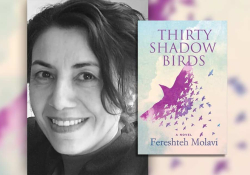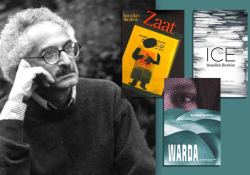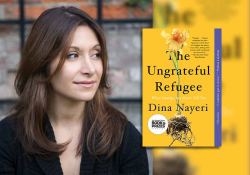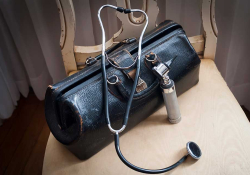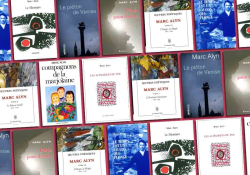Is There Hope in Actual Negotiations between Ukraine and Russia?

Ukrainians are fighting for their right to exist as a people. Will the US choose the right side of history?
The recent spectacle at the White House with President Zelensky was horrendous. The US administration clearly wanted to somehow diminish the Ukrainian president publicly. Mr. Zelensky was offered the carrot of a rare-earth-mineral financial agreement to bring him to the White House for the meeting but instead was hit with a stick of verbal assaults that persisted afterward on social media. The president of Ukraine should have been treated as well as any other important head of state during an official visit to the US, the way that the presidents of Great Britain, France, Israel, Ireland, and India were treated recently—with decorum and not with derision.
On a more positive note, President Zelensky has just indicated that preliminary talks in Saudi Arabia between the teams of US and Ukrainian diplomats have been encouraging. In fact, National Security Adviser Michael Waltz has just called for the return of Ukrainian children taken by Russia as a sign of good faith by the Russian side. The rub, of course, will be the Russian side. Will they give back the thirty thousand children stolen from Ukraine and taken to Russia?
As a lifelong scholar of Ukrainian and Russian literature, I know both cultures well. Ukraine has a tradition of democracy from the time of the Ukrainian Kozaks (aka Cossacks), who elected their leader, their hetman, to its thirty-three-year-old democracy of today. Russia, on the other hand, has a tradition only of autocracy and strongman rule, even after the 1917 Bolshevik Revolution that toppled the Russian tsar. The fledgling attempts at post-Soviet democracy failed miserably, leaving a vacuum for Putin to achieve one-man rule in Russia through total control of the press, the abolishment of personal freedoms, and the arrest of anyone who dissents.
Ukraine has a long history of being repressed by Russia and the USSR. The tsarist regime in the nineteenth century banned the Ukrainian language in print and in public performances. After a brief period called “The Executed Renaissance” in the 1920s when Ukrainian culture flourished, Stalin arrested, tortured, and executed over seven hundred of the best and brightest Ukrainian writers. He also eliminated five million Ukrainian peasant farmers by mass starvation (called the Holodomor in Ukraine) in 1932–33, at a time when the USSR was exporting grain to fund its forced industrialization. The Soviet Union continued a policy of Russification when the Ukrainian language and culture were repressed, and numerous cultural figures like the poet Vasyl Stus were imprisoned and/or killed.
Russia is doing in the occupied territories today precisely what it has done before in the nineteenth and twentieth centuries. Ukrainian writers and cultural figures have been arrested and tortured, cultural sites have been looted or bombed, and a policy of Russification implemented with the burning of Ukrainian books, the banning of the Ukrainian language, and the closing of Ukrainian schools. (To get a sense of this, see my 2022 blog post in WLT about the torture and execution of Ukrainian children’s author Voloydymyr Vakulenko.) History repeating itself in the current situation drives Ukrainians to fight with every ounce of their being against this empire of evil.
History repeating itself in the current situation drives Ukrainians to fight with every ounce of their being against this empire of evil.
Despite their daily bombardments and ground assaults, the Russians are bogged down. Ukraine has been able to fight back effectively with the military aid of the democratic governments of the world, for which it is exceedingly grateful. Soon after agreeing to a ceasefire in principle after Mr. Putin’s phone call with Mr. Trump, Russia stepped up its attacks on civilian targets in Odesa, Sumy, Zaporizhzhia, Kyiv, and elsewhere. Ukrainian forces responded by striking Russian military targets in occupied Crimea and the Engels-2 airbase in Russia, the main launching stage for strategic bomber attacks against Ukraine. A ceasefire will never happen until Russia stops firing against civilian targets. Ukrainian forces are shooting down over one hundred Russian drones virtually every day. For a truly peaceful resolution to the conflict, Ukraine needs guarantees against future Russian military aggression. Ukraine would never initiate any kind of armed conflict with Russia, and a mutual nonaggression pact would be a significant step to ensure a peaceful future along with peacekeeping troops stationed in the country.
The Budapest Memorandum on Security Assurances in 1994 signed by the US, Russia, Ukraine, and Great Britain was meant to guarantee the borders of Ukraine and its security in exchange for Ukraine giving up its nuclear arsenal. It ultimately failed to protect Ukraine from Russia’s 2014 and 2022 violations of that memorandum. For Putin, might makes right with no regard for treaties or international law. With his imperialist mentality, he has effectively driven Russia backward into becoming a neo-Stalinist state. He wants to eliminate Ukrainians from the face of the earth and openly denies their existence as a people. It is no wonder Ukrainians call the Russian invaders rashysty (a combination of the words “Russian” and “fascist”) and Orcs (mindless killers from Tolkien’s universe).
My sincerest hope is that reasonable heads prevail in the ongoing negotiations with a willingness to come to a just solution. One must, however, keep in mind the fact that Russia is the aggressor state that invaded its sovereign, peaceful neighbor in 2014, illegally annexing Crimea and part of eastern Ukraine, and then launching a full-scale invasion in 2022. Ukrainian sources estimate that Russia has lost a staggering 900,000 men in the three years since the invasion and myriad weapons of war, including over half of its Black Sea fleet. Ukraine, too, has lost many of its courageous men and women fighting selflessly to defend their homeland. Ukraine was expected to fall in three days. Against all odds, three years later Ukraine is still standing with 53 percent of Americans—according to a recent Gallup poll—supporting the continued supply of weapons from the US to help Ukraine defend itself.
If the negotiations fail to make progress toward a just solution, it would be an egregious lapse of judgment for the US to cut off military aid to Ukraine. In providing that aid, the US is supporting freedom, democracy, and the rule of international law. Eliminating it would put not just Ukraine but also the rest of Europe in imminent danger. There already are over seven million Ukrainian refugees from the war. Even a partial Putin victory or truce on Putin’s inflexible terms would lead to millions more Ukrainians seeking refuge. Ukraine wants peace, but a just peace. Ukraine wants guarantees that it will not be attacked again by a heavily rearmed Russia if Western sanctions are removed. This war for Ukraine is an existential one against ethnic cleansing. Ukrainians are fighting for their right to exist as a people. If Russia adamantly refuses to negotiate anything beyond capitulation by the Ukrainian side, the US administration should put maximal pressure on Russia’s dictator and not on democratic Ukraine to end the war. Otherwise, the US will be on the wrong side of history and will openly reward Russia for its aggression against its peaceful neighbor.
The Pennsylvania State University

